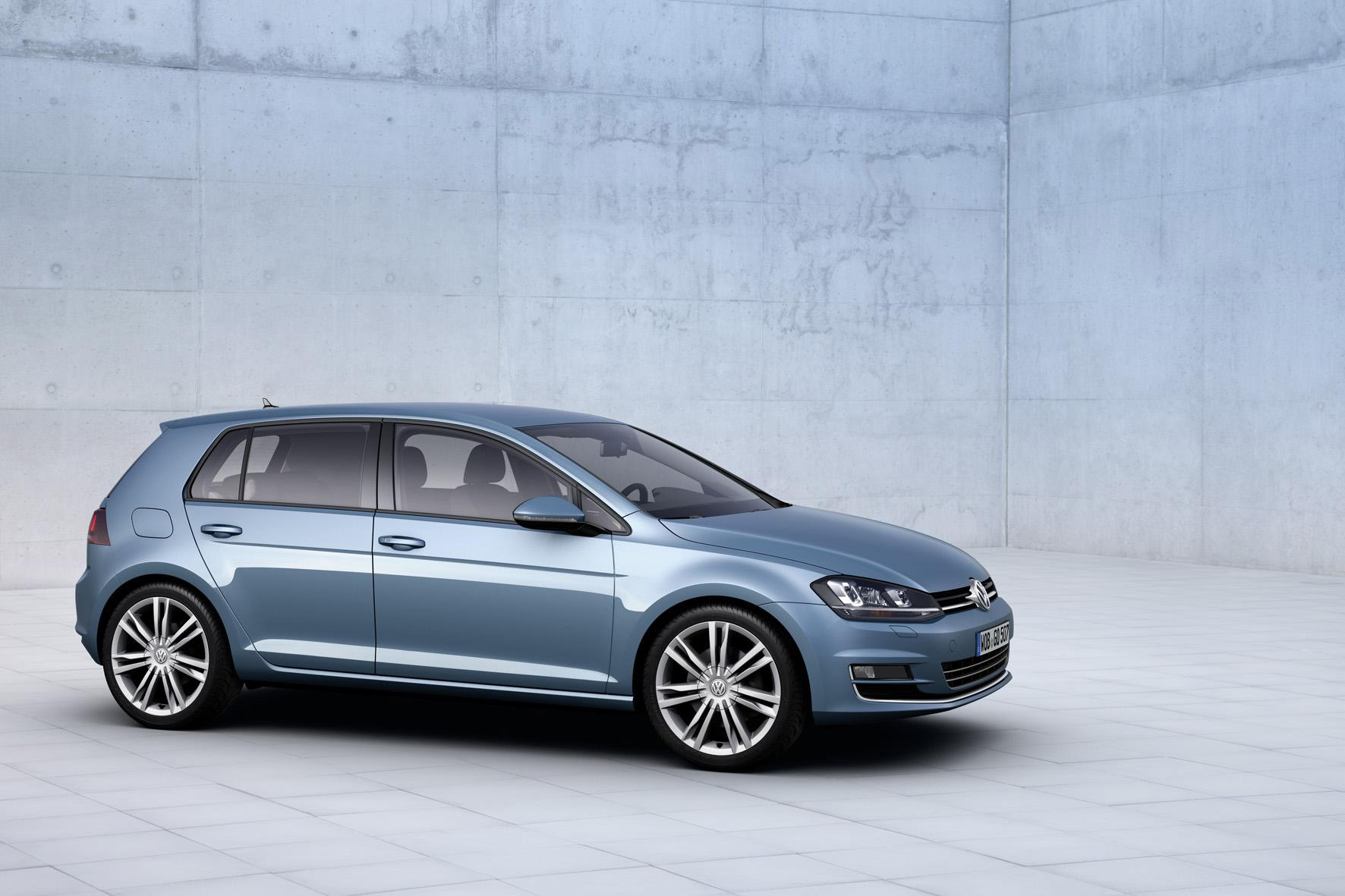First Drive …. the new 2012 Volkswagen Golf
A new Volkswagen Golf launch is always much more significant than this seventh-generation model’s visual changes would have you believe.
Aside from a little Audi-style squaring-off of some of the car’s corners, there’s not too much that’s different at a glance.
But look closely and you’ll see a more radical set of changes than any that have passed under the Golf banner before.
If you think it looks longer, you’re right. There’s an extra 56mm in the middle, mostly due to the front wheels being shunted forwards on the all-new MQB chassis. That’s Modular Transverse Matrix, or Modularer Querbaukasten if your German is up to scratch.
It’s a little wider too, with thinner doors for significantly more shoulder room. It’s lower, though, repositioning the seats to compensate for any reduction in headroom and provide better aerodynamics.
Meanwhile, weight has been shaved off – or rather it’s been brutally chopped off. Around 100kg is the saving, or the equivalent of two young teenagers. Efficiency is the name of this Golf’s game, and lighter is better.
We’ve already seen a BlueMotion concept capable of 88mpg or so thanks to a new 1.6-litre TDI diesel engine, but since that’s not available yet – nor is the GTi; again just a concept for now – the Golf VII’s initial range is made up of the bread-and-butter models.
There are two versions of the excellent turbocharged 1.2 TSI petrol, with 84bhp and 104bhp respectively. Incidentally they’re almost identical in terms of fuel consumption and CO2, but the extra oomph of the 103bhp option on demand makes it the one to buy.
Two 1.4-litre units, one with 120bhp and another with 138bhp and a clever cylinder deactivation system (ACT), complete the petrol spectrum.
For diesel devotees, there’s the familiar 1.6-litre 104bhp engine and a new 148bhp 2.0. The former can achieve 74.3mpg with a careful right foot, while the more powerful lump can still manage 68.9mpg. Impressive stuff, if your patience is up to it.
The most powerful of the petrol and diesel options both do an admirable job in their own ways. The 2.0-litre diesel is impressively tractable and quiet in normal use, while returning big fuel economy numbers given half a chance.
It never really feels as powerful as its figures suggest, but given time and mileage, it might loosen up a little.
The pick of the pair is probably the 138bhp 1.4 petrol. Capable of around 59mpg if you’re an eco-driving demon, it only uses cylinders one and four under light engine loads, shutting off the fuel supply to numbers two and three in the middle.
It swaps between two and four cylinders with anything from a moderate thump to a seamless switch that wouldn’t wake the most temperamental of babies, depending on what you’re doing with the throttle.
There’s not much to choose between the two engines for smoothness, but the petrol is hundreds of pounds cheaper and benefits from less costly fuel at the pumps. On the other hand, the entry-level 1.6 diesel is road tax-free under the current rules.
On the road, the Golf has many attributes and a few niggling flaws. The new body gives good visibility all round, even approaching roundabouts where some A-pillars get in the way.
The door mirrors are too small, though, and don’t do a brilliant job.
On smooth surfaces, the new Golf is whisper quiet; it’s a thoroughly refined thing. It’s not the quietest over bumps or typical broken British tarmac but it’s much the better for the significant weight loss.
It feels longer on the road, its 59mm wheelbase increase sometimes rearing its head around corners, and it feels larger inside. But it feels a little livelier and more willing than before.
Build quality is very much what buyers will expect, with many materials seemingly making the generation jump from the Golf VI.
On the high-spec test cars, the plastics, dashboard layout and displays will all be familiar to last-gen Golf owners. The colour displays have been given a welcome update, though.
There are excellent practical touches such as a lower boot sill to make loading easier, and a boot floor that can conceal the parcel shelf at need.
The doors, too, are designed to sit at almost whatever point you open them to without moving, to make it easier to avoid hitting neighbouring cars in car parks.
As standard, the new model comes with a genuinely impressive array of kit, but key things such as alloy wheels and a leather-trimmed steering wheel are omitted to encourage upgrading.
The list prices aren’t cheap, but it’s a quality product that – like the Mk V and Mk VI before it – defines what a compact family hatch should be. British buyers will love it.
FACTS AT A GLANCE
Model: Volkswagen Golf 1.4 TSI GT, £22,705 on the road
Engine: 1.4-litre turbocharged four-cylinder petrol with cylinder deactivation, producing 138bhp
Transmission: Six-speed manual gearbox driving the front wheels. DSG automatic optional.
Performance: TBC
Fuel economy: 58.9mpg
CO2 rating: 112g/km
Latest posts by Sally - Silversurfer's Editor (see all)
- 5 edible uses for Borage - April 28, 2024
- How to keep your tulips lasting longer - April 25, 2024
- Do you sleep with a snorer? - April 25, 2024
- Holiday hack: How to win a GHA DISCOVERY Titanium status upgrade - April 23, 2024
- British Asparagus and Pea Risotto with Lemon and Crème Fraiche - April 23, 2024





















